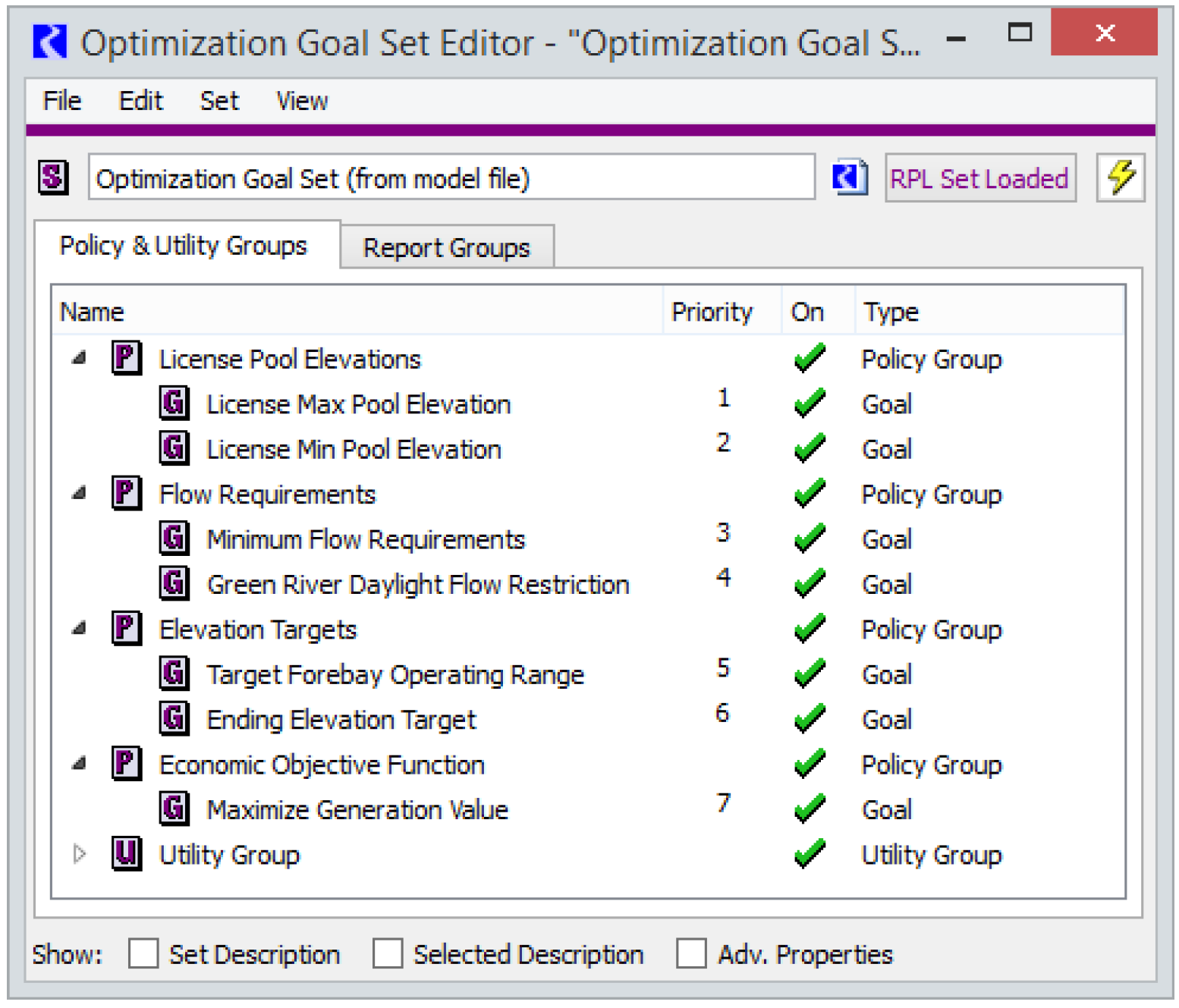Create an Optimization Goal Set
The Optimization policy must be cast into a set of prioritized goals. Like a RBS Ruleset, an Optimization Goal Set is a prioritized list of goals (written in RPL). However, whereas the rules in a RBS Ruleset are all executed at each timestep and set values, Optimization Goals are each executed once during a run from highest priority to lowest priority and have the effect of modifying or solving the current linear programming problem.
RBS rules are normally ordered to execute in an upstream to downstream order, object-by-object. Generally there is no need to order Optimization goals in an upstream to downstream order. The priorities of the goals should correspond to their true priorities in operations. The highest priority goals should correspond to the most important operating constraints, those that should essentially never be violated.
A single goal can contain constraints for multiple objects, but it is generally recommended that a single goal correspond to a single operating policy. For example, the highest priority goal might contain the license maximum Pool Elevation constraints for all reservoirs at all timesteps. The second goal might contain the license minimum Pool Elevation constraints for all reservoirs at all timesteps. This is generally better practice than placing the minimum and maximum elevation constraints in the same goal or placing the minimum elevation constraint in the same goal (same priority) as a minimum flow constraint. When multiple policies are combined in a single goal, it is not always obvious how the policies will trade off with one another if it is not possible to satisfy all constraints at that priority.
Medium priority goals generally contain constraints that you expect to get satisfied most of the time but that may not be possible to satisfy under some operating conditions, for example under extreme high or low flows. Lower priority goals typically contain target operating constraints, targets that you would like to meet under ideal conditions but are expected to be frequently violated due to higher priority constraints and input data (e.g. inflows). For example, you might have a low priority goal to keep flows equal across all reservoirs on each timestep, but most of the time you cannot keep flows exactly equal due to other requirements on the system. Typically the lowest priority contains an objective function to optimize with the remaining degrees of freedom given all higher priority constraints. For example, the objective might maximize the total value of hydropower generation during the run within the operational limits specified by higher priority constraints.
Figure 6.3 is a simple example of an Optimization Goal Set.
Figure 6.3

See RPL Optimization Goal Set for additional information about the Optimization Goal Set. See Statements in Goal Sets for details about the individual statements that make up Optimization Goals.
Revised: 08/02/2021